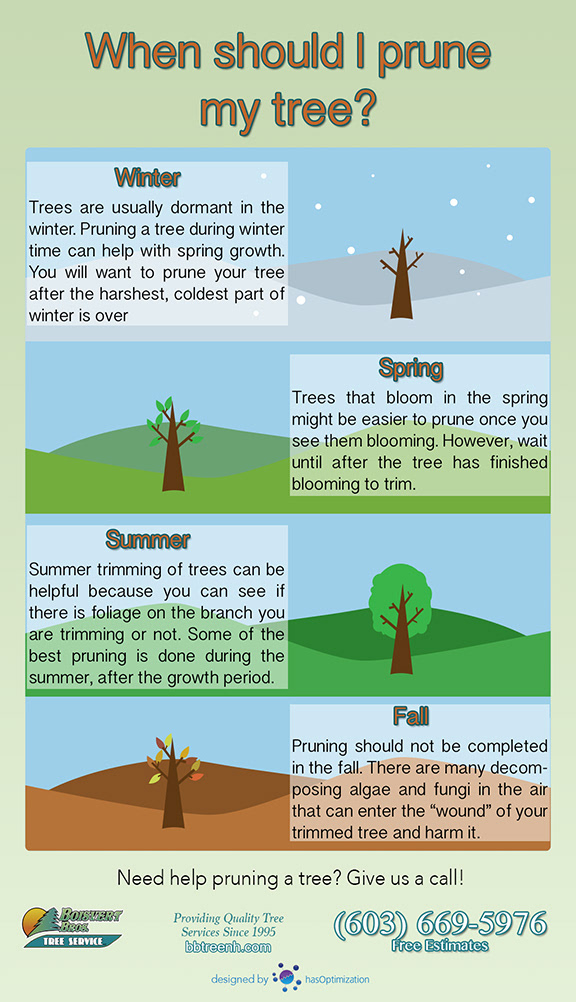Tree Care By Season: Effective Approaches For Managing Trees Prior To And After Their Elimination
Tree Care By Season: Effective Approaches For Managing Trees Prior To And After Their Elimination
Blog Article
Web Content Written By-
When it concerns seasonal tree treatment, making sure appropriate management before and after elimination can substantially influence the health and looks of your landscape. By recognizing the essential actions involved in examining tree health and preparing for removal, you can proactively protect your residential property. Yet what concerning the vital techniques to comply with when the tree is gone? Remain tuned to discover the important post-removal care measures that will certainly assist you grow a flourishing and sustainable atmosphere for your trees.
Pre-Removal Tree Care
Before resolving the elimination of a tree, it's vital to prioritize pre-removal tree care. Start by assessing the tree's health and architectural stability. Search for indications of disease, bug invasions, or any kind of architectural issues that may posture a safety and security hazard throughout removal. It's important to talk to a licensed arborist to figure out the best course of action.
Trimming dead or infected branches can protect against additional damage to the tree and make certain a smoother elimination procedure.
In addition, take into consideration the ecological impact of getting rid of the tree. Trees play a crucial function in our ecological community, so planting a brand-new tree in a suitable area can help counter any loss. Make sure that you have the necessary authorizations and approvals for tree elimination, particularly if the tree is protected by neighborhood guidelines.
Seasonal Maintenance Tips
Evaluating your tree's demands throughout the year is important for its wellness and longevity. To keep your trees in leading condition, comply with these seasonal maintenance suggestions.
In spring, concentrate on trimming to remove dead or broken branches and motivate new growth.
Summer season asks for regular watering, particularly throughout droughts, to ensure your tree remains hydrated.
As autumn methods, watch out for very early indications of condition or stress and anxiety, and take into consideration using compost to protect the roots during winter season.
In winter months, be cautious when getting rid of snow from branches to avoid damage, and continue to monitor your tree's overall wellness.
Keep in mind to adjust your care regular based upon the particular requirements of your tree species and regional environment. By remaining attentive and aggressive throughout the periods, you can assist your trees grow and flourish for several years to find.
Post-Removal Tree Treatment
To make sure the health and wellness of your landscape also after tree elimination, appropriate post-removal care is essential. After a tree is eliminated, it's important to fill the remaining opening with topsoil and small it to avoid settling. This will aid maintain the stability of the ground and protect against prospective risks in the future.
Take into consideration planting new greenery in place of the removed tree to recover the equilibrium and looks of your landscape. On a regular basis water the location to promote the growth of new plants and stop dirt erosion.
Examine the surrounding trees for any indications of condition or tension that may have been brought on by the eliminated tree. Keep an eye out for parasites that could've been drawn in to the previous tree and take safety nets to secure the staying plants.
If garden works , seek advice from an expert arborist to assess the impact of the elimination on the bordering trees and determine any kind of added care required. By complying with these post-removal treatment actions, you can ensure the continued health and charm of your landscape.
Conclusion
To conclude, positive seasonal tree care is vital for keeping the health and equilibrium of your landscape. By evaluating tree health, pruning, and consulting with an arborist prior to elimination, you can ensure a risk-free procedure. After removal, filling up the hole, planting new plants, and routine watering will advertise new growth and protect against erosion. Bear in mind to evaluate surrounding trees for illness and look for further treatment measures from an arborist to keep your landscape growing.
